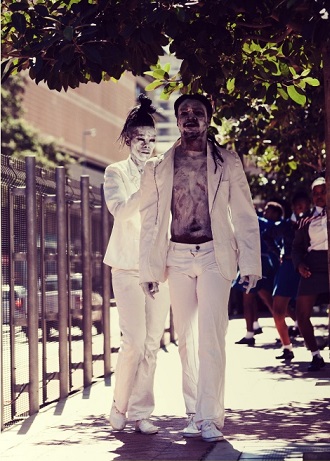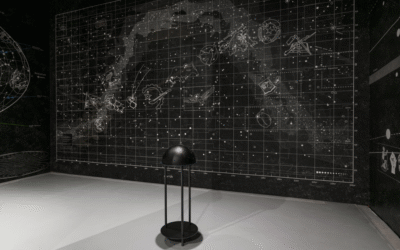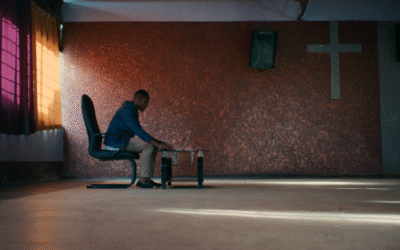“How can a sense of place – and of belonging – be fostered in cities, which, unlike villages, attract much larger and diverse concentrations of people in rapidly changing environments?” ponders Bulelwa Makalima-Ngewana.
My childhood upbringing gave me a strong sense of place – a feeling of connectedness, both to the land beneath my feet and to the people around me. This I am deeply grateful for. I believe that I owe this, in no small part, to my rural roots.
Growing up in a village in the Eastern Cape, the elders in my family saw it as their responsibility to ensure that each new generation was deeply aware – and appreciative – of the roots that bound them to their home and village. In fact, the tradition in my culture is for a baby’s umbilical cord to be buried under the biggest tree in the garden to symbolically connect them to the land and to the place. Perhaps more importantly, there was an understanding that creating a sense of place, and of shared community, was everyone’s responsibility, not just that of the elders of the clan.
Today, living in Cape Town and working in the field of urban transformation, I often wonder how our innate human need to feel rooted and connected plays out in the context of city life. How can a sense of place – and of belonging – be fostered in cities, which, unlike villages, attract much larger and diverse concentrations of people in rapidly changing environments?
Ironically, the very things that make cities dynamic places of excitement, possibility and opportunity can also make them scary and alienating. Anyone who’s ever felt lonely and isolated will know that these feelings are usually intensified, rather than soothed, when experienced in a crowded place filled with strangers. Proximity to people does not guarantee a sense of place – or of being authentically welcomed and accepted; a sense that your contribution, no matter how small, matters.
My work has taken me to a wide range of cities across South Africa, the African continent and the world. Through my travels, and my experiences at home, I have discovered, first-hand, the significance of public spaces in fostering a sense of place in any city. Whether streets or squares, parks or pavements, promenades or playgrounds, these shared spaces between buildings reflect the soul of a city – instantly evoking a sense of belonging and warmth, or, conversely, a feeling of being unwelcome or unsafe.
I believe that, at their best, public spaces allow people to discover a common identity and a deep sense of belonging. We live in a country in constant flux. It is a confusing place to be: our cities develop and sprawl, we have high rates of immigration and emigration, we are constantly re-evaluating our attitudes to one another, and our sense of shared national identity.
Cape Town is no different: the entrenched spatial legacy of apartheid and the dynamics of the past are constantly at play in our present. We are always seeking new ways of memorialising this history, while setting ourselves on a new course towards progress and change.
This sense of instability and dynamism can bring about passion, restlessness and bursts of emotion. It is this unpredictability, complexity, confusion, playfulness and drama that suffuses the spirit of the annual Infecting the City public arts festival, which recently enlivened our city centre. As Jay Pather, curator of the festival puts it: ‘Our chequered history forces us to be inside a moment that bristles with contradiction: conflict, celebration, dizzying heights and terrible lows.’
Infecting the City is significant for Cape Town in that it emphasises the ‘public’ in ‘public art’.
PHOTOS: Sydelle Willow Smith
The festival is all about taking performance out of theatres and galleries and into the streets of the CBD, transforming everyday public spaces into stages, offering a unique creative platform for Cape Town’s diverse performing artists, and encouraging unexpected encounters and spontaneous audience participation. In its essence, it extends an invitation to people from all walks of life to take ownership of their city’s public spaces.
As I said in my last column, after years of segregation and separation, we as South Africans have not yet embraced the sense that public space really does belong to us. How can we, as Capetonians, begin to see our public spaces as places that we own – spaces where we can find each other in a city struggling to find its own social cohesion?
Perhaps it starts with experiencing what’s possible – celebrating traces of the future in the present? I recall the experience of the Fan Walk during the 2010 Soccer World Cup, being swept along in a sea of people – of all shapes, sizes, colours and circumstances – and experiencing a deep feeling of shared humanity. Seeing the Grand Parade transformed from a giant parking lot into a vibrant gathering space for World Cup fans, both locals and visitors, was similarly unforgettable. At the Cape Town Partnership we asked: how can we make this the norm, rather than the exception?
Last weekend the Cape Town Carnival, another free community event, transformed the Fan Walk into a spectacular open-air festival, with an exuberant theme that invited people to gather together and ‘Imagine’ possibilities. As the masterful floats moved through the crowds –bringing a sense of magic to the warm evening – it was almost impossible to distinguish the 2 000 official costumed performers from the festive carnival fans. People partied together into the early hours, many arriving as strangers and leaving as friends.
Over the past two weeks, seeing the streets of Cape Town’s central city alive with activity until late into the night, I have been reminded of the incredible progress that has been made in creating safe, clean, inviting public spaces for locals and visitors to enjoy. It’s hard to believe that, just 15 years ago, the streets of the CBD were no-go zones after dark, plagued by crime and grime. The progress that’s been made would not have been possible without close collaboration between the City of Cape Town, property owners in the CBD – who fund the important work of the Central City Improvement District (CCID) – the Cape Town Partnership and active community groups. This work is ongoing, and balancing the priorities of keeping the city centre clean and safe while also addressing issues of social development and inclusivity remains challenging.
What I do know is that a caring city requires a coalition of caring partners, especially when it comes to deciding on how public space can be used, activated and enlivened for the benefit of everyone. Urban activist, the late Jane Jacobs, said: ‘Cities have the capability of providing something for everybody only because, and only when, they are created by everybody.’
Our motto at the Cape Town Partnership is: ‘People make places.’ Through our work, we are starting to see more and more creative, citizen-led activations improving the public spaces of Cape Town’s central city.
Harrington Square is one of the public spaces being transformed through active community involvement. The space is currently used predominantly as a car park, but that has not stopped a group of active citizens from envisioning what it could be. A sense of the character of the square’s heritage in District Six, as a meeting place, is returning. ‘The Friends of Harrington Square’ is a group of visionaries who understand the fundamental value of great places, and the need to work together to shape the future of a place. Household names in Cape Town; Charly’s Bakery, District 6 Museum, Woodheads and The Bank have combined their energies and ideas, to take an active interest in Harrington Square. They are setting up communal benches and pot plants, a children’s play area, public art installations and community gardens to create a sense of togetherness and co-ownership amongst the community. Together with the Cape Town Partnership, they have recently partnered with Connected Space to bring free Wi-Fi to the square. In the last few months we have seen a growing interest of citizens logging on and being connected on the square. More than 500 new users log onto the area’s free Wi-Fi per month.
A similar partnership between the Cape Town Partnership, City of Cape Town, Connected Space, Iziko Museums of South Africa, Company’s Garden and City Parks has also brought free Wi-Fi to the Company’s Garden, with more than 3 500 new users logging on each month.
These initiatives serve to connect people, both virtually and physically, in public spaces. This connection is important in that it fosters social cohesion and plugs people in to opportunities.
In a city where many people still struggle to meet their basic needs, public space can be viewed as a luxury. As a result, many of Cape Town’s most vulnerable communities are devoid of safe, clean spaces for children to play, for communities to gather, and for neighbors to connect. Yet societies, democracies and communities have depended on public spaces for human engagement and exchange throughout the ages. Public space is therefore literally a commons: the common ground where people meet as citizens, neighbours and friends.
Groundbreaking public space activist Tim Tompkins, of New York’s Times Square Alliance, visited Cape Town last year on the invitation of the Cape Town Partnership and Central City Improvement District. He said something that made a strong impression on me: ‘A city’s vision for its public space is a manifestation of its vision for the city as a whole.’
Perhaps it’s time to start seeing public space as essential to the quality of our daily lives – a necessity and a fundamental human right, not a luxury reserved for the affluent?
Let’s start by finding those traces of the future and nurturing them – in our neighbourhoods and in our own back yards!
This article first appeared in the Cape Times on 18 March 2014.
Bulelwa Makalima-Ngewana is CEO of the Cape Town Partnership. Talk to her @darksjokolade
PHOTO CREDIT: Sydelle Willow Smith







